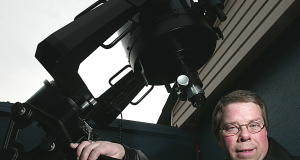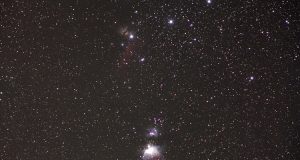Turn back time to 230 million years ago when dinosaurs began roaming the earth. Some only relied on a plant-based diet while others were meat-eaters. For a long period, they ruled the lands beneath their feet, never knowing a different world displayed above their heads we call the cosmos. Imagine how dark the starry sky must have looked back then with the only light-pollution being an active volcano. It was during the Mesozoic era about 66 million years ago when the dinosaur’s last perfect day came to an end.
On that unfaithful day, a blinding light lit the sky as a ten-kilometre wide asteroid travelling close to twenty kilometres per second, collided with the earth. This event is a popular theory on what killed the dinosaur and 75% to 80% of all life on earth. Museums around the world proudly exhibit the fossilized remains of these once-mighty creatures. You might think this is the only way to travel back to their time period but you would be wrong.
According to Einstein, the speed of light is the fastest thing there is. But even with a mind-boggling speed of 300,000 kilometres per second or seven and a half times around the earth in one second, it takes time for the photons of light to reach our eyes from great distances. The closest star other than the sun is Proxima Centauri which is about 4.2 light-years from us. The bright star Sirius located to the lower left of Orion is 8.6 light-years away. Keep in mind that a light-year is about ten trillion kilometres. In contrast, our moon is an average distance of 386,000 kilometres from us (1.3 light-seconds away, the sun is 150 million kilometres (8.3 light-minutes away). Even the light from Saturn takes 90 light-minutes to travel from its farthest point from us at about 1.6 billion kilometres away.
These pale in comparison to the remote galaxies like our Milky Way which individually hold 200 billion to 400 billion stars or more. Today’s amateur telescopes help reveal these distant islands of stars residing tens to hundreds of millions of light-years away. Over my observing career, I have seen many of these faint objects whose light left the time dinosaurs were running around. Viewing vast objects such as these and knowing how long their light has taken to reach us cannot be put into words. The farthest galaxy I have seen with my telescope is catalogue number IC4617. It is located in the constellation Hercules and resides an astonishing 500 million light-years from us. The light left this galaxy after the Cambrian Explosion occurred on earth which saw a burst of life in the oceans some 550 million years ago. Even the Pleiades star cluster (the heart of Taurus the Bull) is thought to have formed during the Cretaceous period, a mere 100 million years ago. Some distant stars may have already exploded long ago to which we are looking at their ghosts. So the next time you gaze up at night, imagine what events were occurring here on earth during that period.
Till next time, clear skies.
- Full Moon Names - June 10, 2025
- March Lunar and Solar Eclipses - March 4, 2025
- Winter Sky, Bright Planets - January 6, 2025
 Wawa-news.com You can't hear the 'big picture'!
Wawa-news.com You can't hear the 'big picture'!


